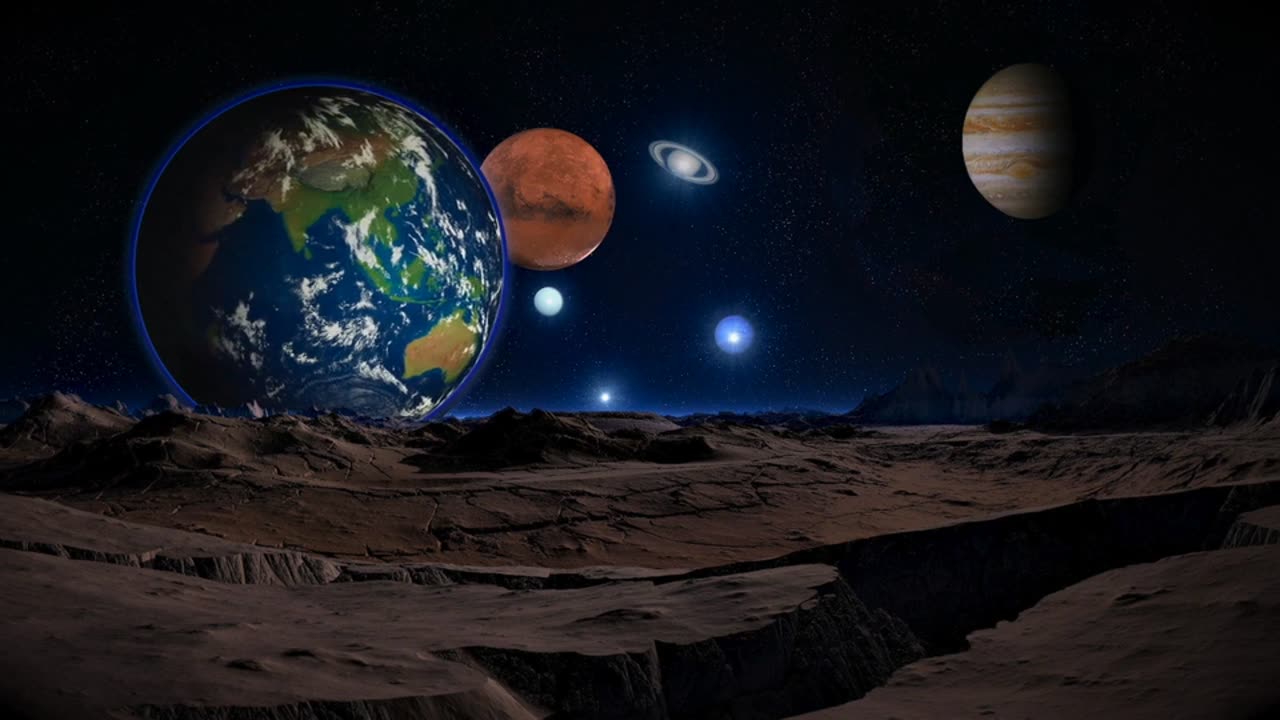Premium Only Content

Planets
Mercury: Mercury is the closest planet to the Sun and is known for its extreme temperatures. It has a very thin atmosphere and a heavily cratered surface due to its lack of significant geological activity.
Venus: Venus is often called Earth's "sister planet" due to its similar size, but it's a hostile world with a thick atmosphere composed mainly of carbon dioxide. This results in a runaway greenhouse effect that makes it the hottest planet in our solar system.
Earth: Our home planet, Earth, is the only known planet to support life. It has a diverse range of ecosystems, an atmosphere rich in oxygen and nitrogen, and surface water in the form of oceans and lakes.
Mars: Mars is often referred to as the "Red Planet" due to its reddish appearance caused by iron oxide (rust) on its surface. It has polar ice caps, evidence of past water flows, and the largest volcano and deepest canyon in the solar system.
Jupiter: Jupiter is the largest planet in the solar system and is primarily composed of hydrogen and helium. It has a distinctive banded appearance due to its powerful atmospheric currents and hosts the famous Great Red Spot, a massive storm.
Saturn: Saturn is known for its stunning ring system composed of icy and rocky particles. It is a gas giant like Jupiter, and its rings make it a favorite among stargazers. Saturn has numerous moons, with Titan being one of the most interesting due to its thick atmosphere and potential subsurface oceans.
Uranus: Uranus is unique for its extreme tilt, which causes it to rotate on its side. It has a bluish-green hue due to the presence of methane in its atmosphere. Uranus is classified as an ice giant, composed mainly of water, ammonia, and methane ices.
Neptune: Neptune is the outermost planet in the solar system and is also an ice giant. It has a striking blue color due to the presence of methane in its atmosphere. Neptune has strong winds and a famous dark storm called the Great Dark Spot
-
 1:24:00
1:24:00
Man in America
11 hours agoMarket Crash, Tariffs, USD Collapse: Trump's Plan to END the Old World Order? w/ John Perez
30.4K25 -
 8:07
8:07
Colion Noir
6 hours agoShould You Carry Non-Lethal Weapons For Self Defense?
28.8K49 -
 14:53
14:53
Forrest Galante
2 hours agoAustralia's Top 5 Deadliest Animals
3.34K8 -
 LIVE
LIVE
DLDAfterDark
2 hours agoDLD Live! What's The "best" PDW?? Considerations For Trunk/Truck Gun & Gats in Bags & Backpacks
244 watching -
 15:25
15:25
Exploring With Nug
13 hours ago $1.30 earnedBag of Phones Found While Searching For Missing Man In River!
50.9K19 -
 LIVE
LIVE
fuzzypickles168
2 hours agoLate Nite Jam Session - Rock Band 4 | Was: EA Sports WRC | 1 John 2:1-17
63 watching -
![Nintendo Switch It UP Saturdays with The Fellas: LIVE - Episode #13 [Mario Kart 8 Deluxe]](https://1a-1791.com/video/fww1/97/s8/1/1/g/A/z/1gAzy.0kob-small-Nintendo-Switch-It-UP-Satur.jpg) 3:33:38
3:33:38
MoFio23!
12 hours agoNintendo Switch It UP Saturdays with The Fellas: LIVE - Episode #13 [Mario Kart 8 Deluxe]
18.9K -
 23:24
23:24
MYLUNCHBREAK CHANNEL PAGE
12 hours agoDams Destroyed Turkey
72.6K65 -
 LIVE
LIVE
SpartanTheDogg
5 hours agoPro Halo Player
219 watching -
 11:29
11:29
Tundra Tactical
5 hours ago $0.28 earnedGEN Z Brit 3D Prints a WORKING Gun Pt.3!
33.6K3